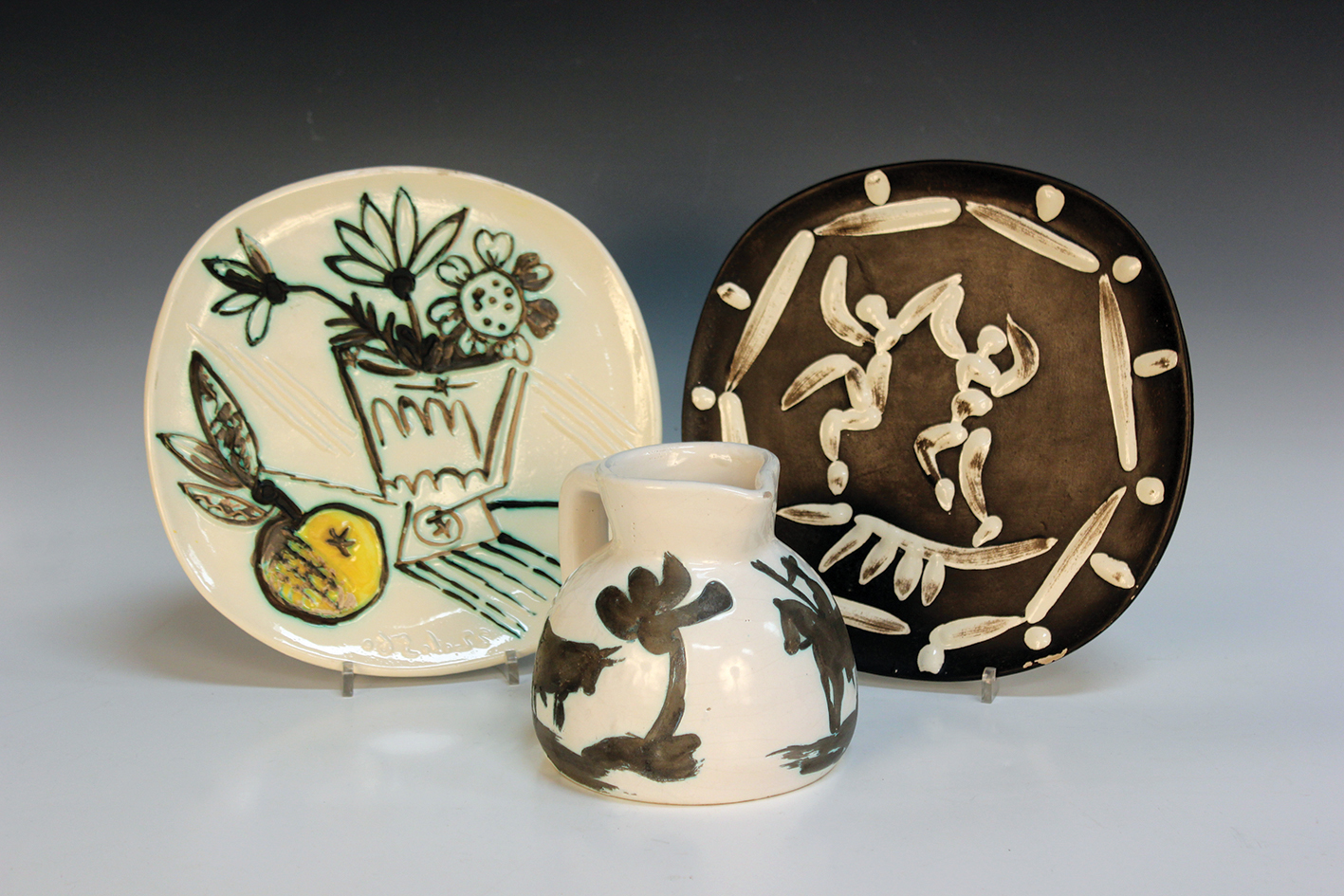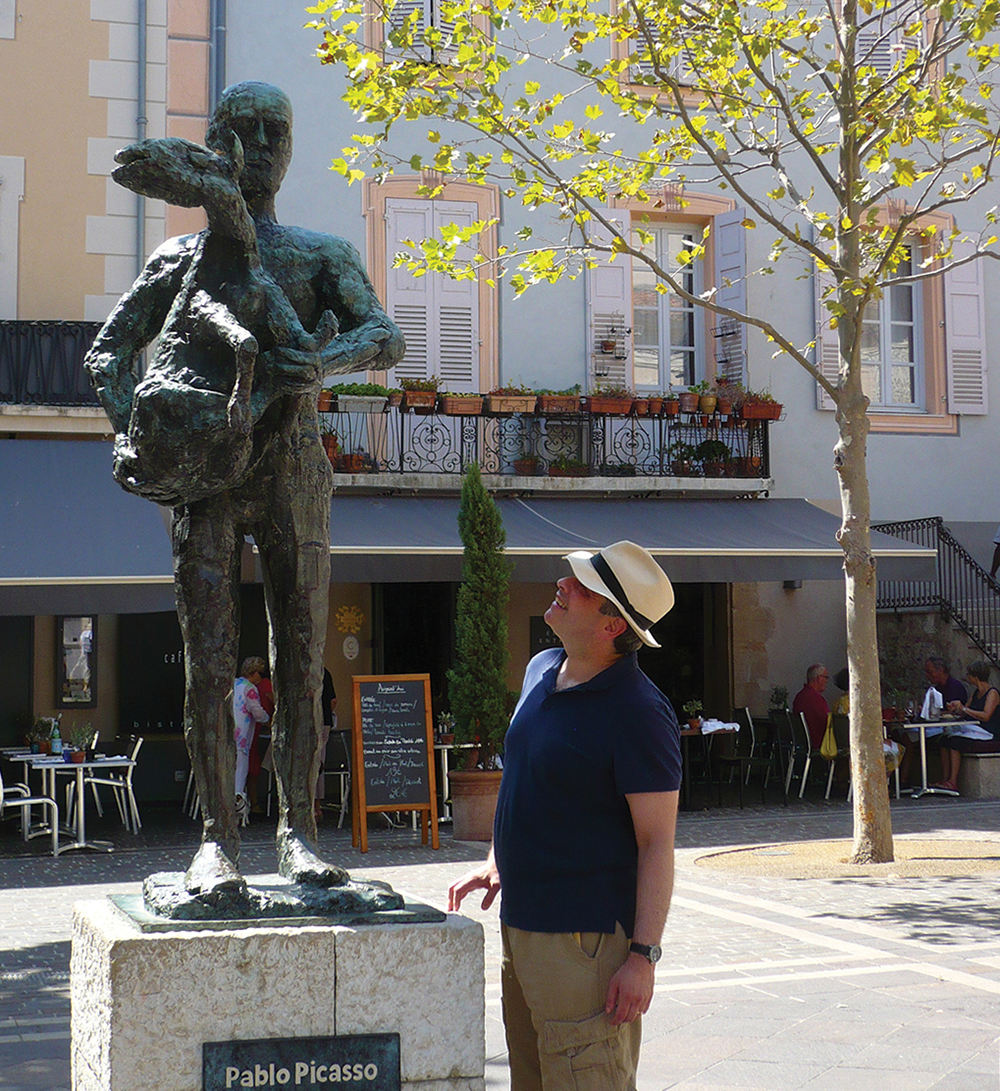
Amongst the towering giants of 20th century art was Pablo Picasso. After living under the Nazis in his Paris studio Picasso journeyed south to Provence. Provence, as much an idea as a place, has gathered diverse peoples to her over millennia. Each have added to her richness and, in their turn, have been shaped by this remarkable land and her people.
In 1946, Pablo Picasso visited the annual potter’s exhibition in the provincial town of Vallauris. There he met Suzanne and Georges Ramié, the founders of the Madoura workshop, who were keen to persuade him to come to Vallauris. Picasso returned in July 1947 bringing his extraordinary imagination and creative energy to ceramics. Picasso took the everyday and transformed it in to high art painting and incising with a richness of expression which still causes my heart to race. Favourite themes included figures, bullfights and still lifes as depicted on the jug and plates illustrated here. In each you see the free, graphic rhythm which typifies Picasso’s ceramics. These pieces are Picasso Madoura editions and are authentic replicas of the original work. They sold for a total of £8200 at Toovey’s. Like a handmade print their close connection with Picasso’s hand attracts the attention of an international group of collectors. Picasso’s relationship with Madoura and the Ramiés grew and he lived at Vallauris before moving to Cannes.

Picasso resurrected the ancient tradition of the all-round artist exploring painting, sculpture, graphic art, engraving and ceramics. Picasso delighted in the craft of the ceramicist and quickly began to talk with the Ramiés using the technical language of the potter. The Ramiés indulged Picasso’s often extremely unorthodox practices which included his methods of firing, glazes and form. Take for example the plate ‘Bunch with Apple’, made in 1956, in an edition of 400 which was decorated with oxidized paraffin.
You approach the Musée National Picasso at Vallauris in Provence through a square filled with shops and restaurants. Amidst the life of the village stands the bronze L’homme au mouton given by the artist in 1949. Inside the museum there is a jewel like array of original ceramics made by Pablo Picasso which is guarded fiercely by the museum staff. The pieces capture the spirit of Provence in a way which speaks of a joy and freedom after the artist’s years under Nazi occupation in Paris. You sense the effect that the light and warmth of Provence had on Picasso expressed in his ceramics in the post-war years.